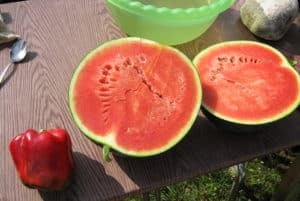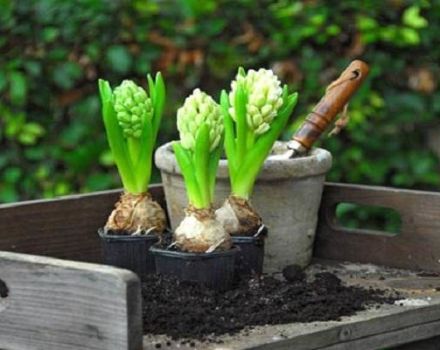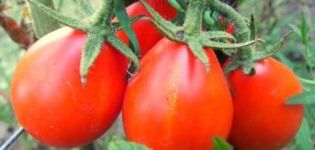The technology of growing square watermelons with your own hands at home
In August, it is time for ripe and juicy watermelons. The pulp of the fruit contains a large amount of nutritional vitamins and minerals. Regular consumption of fruits in food will cleanse the body and, at the same time, lose weight. Traditionally, everyone is used to the fact that the berry has a round or oval shape. But more and more often in the markets you can see a square watermelon.
The advantage of this form of watermelon and the difference from the round
Everyone is used to the fact that watermelon is a round berry or, in extreme cases, oval. But in the past few years, cubic watermelons have been seen on the market. According to its characteristics, it is the same berry, only of a different shape. There are no differences between cubic and round berries, except for the shape.
Square watermelons have been around for several years. For the first time, the Japanese managed to give the fruit a square shape. The advantages of such berries are that in this form the fruits are easier to transport. They take up less space during transport. This is the only advantage of square watermelons over round ones.
Growing secrets
Growing watermelons outdoors is not difficult. The only limitation is that this culture does not grow in every climate. More precisely, it will be possible to grow berries only in the southern regions, where the summer is hot and long. Even in the central parts, it will not be possible to grow large fruits.
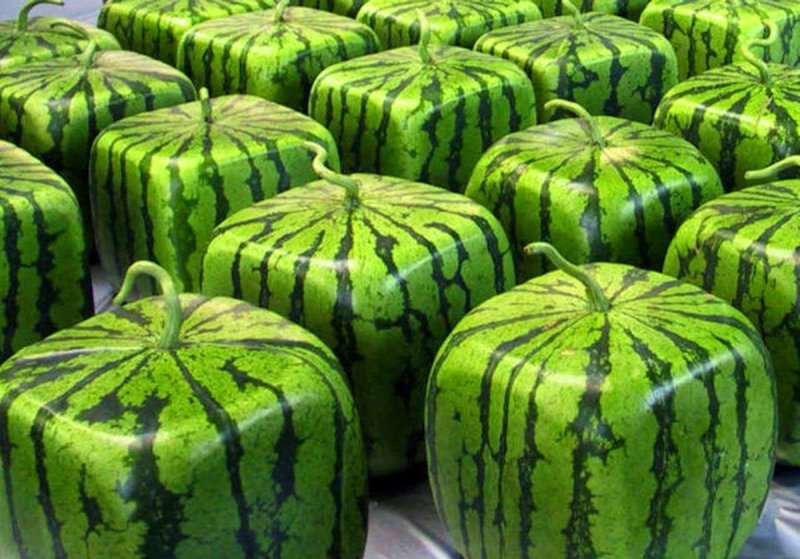
Seed selection
One of the most expensive watermelons is the Densuke variety. This berry has an unusual dark green peel that looks black from a distance. Before planting watermelons, you need to choose the right variety.
If you have to grow the variety in the central regions, then preference should be given to zoned varieties. Such seeds are adapted to climatic conditions and give a good harvest.
All varieties are grown in the southern regions. Early varieties of watermelon have a watery flesh. They taste not very sweet. Sugar are only late varieties of berries. In the south, seeds are immediately planted in open ground. In other regions, seedlings are first grown at home, and then transplanted to a permanent place.
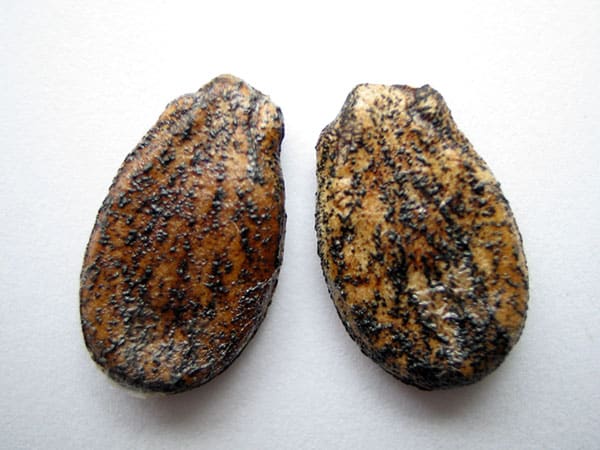
Sowing and growing seedlings
Since square watermelons are no different from ordinary watermelons, they are grown in the same way. Particular attention is paid to sowing seeds. First, the seeds are germinated.
In a saucer, you need to dilute a weak solution of potassium permanganate and transfer the seeds there. Place the saucer in a plastic bag, draw some air into it and tie.After a few days, shoots begin to appear. After that, the seeds are planted.
Each seed is placed in a separate container. To prepare the soil you need to take:
- sand, peat and turf soil (in equal proportions);
- 100 grams of double superphostphat;
- 50 grams of ammonium nitrate.
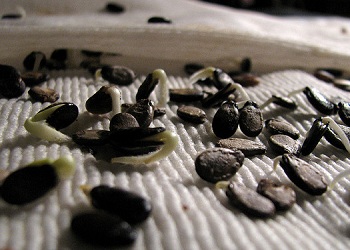
Mix all ingredients thoroughly and arrange in cups. Plant the seeds. The first shoots appear in a few weeks. Planting melons in open ground is carried out after warm weather has established on the street, and there will be no frosts at night.
Care, watering and fertilization
After planting in open ground and during the period of active growth, melons and gourds require a large amount of liquid. The preferred type of irrigation is rainwater, that is, using a hose. They also put an automatic sprinkler and turn it on in the evenings for 3-4 hours. Watering should be done only in the evening.
The amount of watering is reduced after the flowering period. Then they switch to drip irrigation.
Fertilizers are applied at the root of watermelons. One bush requires 300-500 milliliters of dressings. After the soil is watered with warm water. Organic fertilizers include mullein and chicken dung. As for the mineral ones, you need to use complex ones, which include all the necessary elements.

Mixtures prepared according to folk methods are also used as fertilizers. For example, yeast-based feeding is considered the most effective. To prepare a yeast-based fertilizer, you need to take 3 liters of water, 6 tablespoons of granulated sugar and a package of yeast. Mix all the ingredients and leave to ferment for 3-5 days. Before watering, dilute 200 milliliters of fertilizer with 1 liter of water and water the plants at the root. Such dressings promote the growth of bushes and the abundant formation of ovaries.
Formation of the fetus
It is possible to grow a square watermelon only in the southern regions, where summer comes early and ends late, and the weather is hot all season. The technology for growing a square watermelon is quite simple, and such fruits can be obtained even at home. Those summer residents who live in the south can experiment and grow square fruits.

How to prepare a mold for a watermelon
It is not difficult to prepare a mold for a watermelon at home. The main thing is to have the necessary materials on hand. This is the only difficulty that summer residents face in the process of growing a square fruit.
Required materials and tools
In order to make a structure for the formation of a berry, you will need the following devices and materials:
- several sheets of transparent material (thickness 0.5-0.8 millimeters);
- corners for connecting the structure;
- screws with nuts;
- furniture hinges;
- hacksaw (if there is no hacksaw at hand, a jigsaw will do);
- drill;
- screwdriver;
- ruler;
- marker.
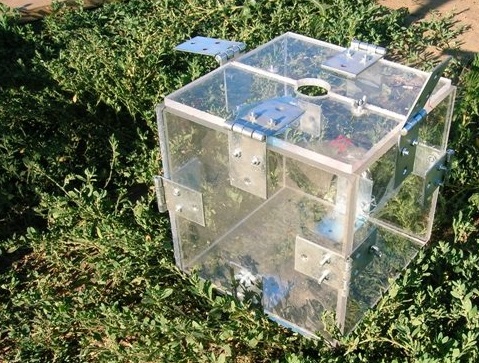
After all the materials are prepared, you can start collecting the form.
Construction assembly process
Making a square shape for a watermelon with your own hands:
- several 20x20 squares are cut out of plastic;
- at the point of contact of the squares, they are connected with screws;
- on one side of the resulting box, a hole is drilled for a watermelon vine;
- the upper part of the drawer is fixed with hinges with fasteners.
The main thing is that the plastic box is strong enough and able to withstand the onslaught of the watermelon growing inside. Fruits should be placed in crates made after they reach the size of an apple.
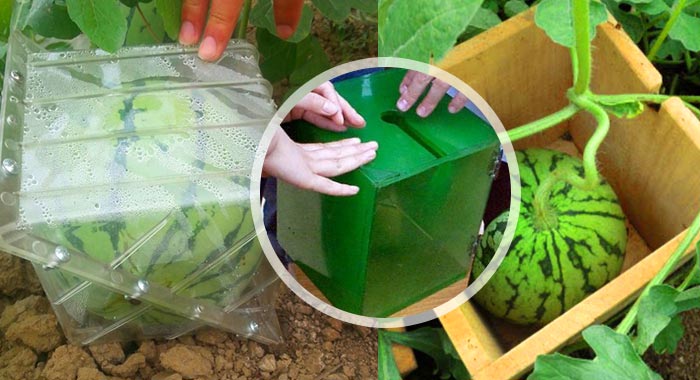
Harvesting and storage rules
There are several ways in which the maturity of the watermelon is determined:
- The skin of a ripe watermelon becomes shiny and glossy.
- To determine the ripeness of the berry, you need to press hard on the peel, if it is pressed through, then the watermelon is not ripe. And if it remains firm, then you can harvest.
- The stalk must be dry.
- A bright yellow spot should remain where the watermelon touches the soil.
- Before cutting the berries, you need to tap on the peel. If the sound is muffled, then the berry is ripe.
After the melons have been harvested, the berries must be properly stored so that they stay intact for longer. They should be stored in a dark room where open sunlight does not penetrate. For long-term storage, only late varieties of melons are suitable.
Such fruits are cut with a sharp knife or pruner. In this case, the stalk must be left at least 5 centimeters long.
The harvested crop is placed on a thin layer of straw. Only healthy fruits without mechanical damage are suitable for long-term storage. If there are cracks on the peel, then such a fruit will not be stored for a long time.
Square berries are often kept in earthen trenches. The hole is covered with straw or hay, then the crop is spread. After that, it is again covered with straw and covered with soil on top.

